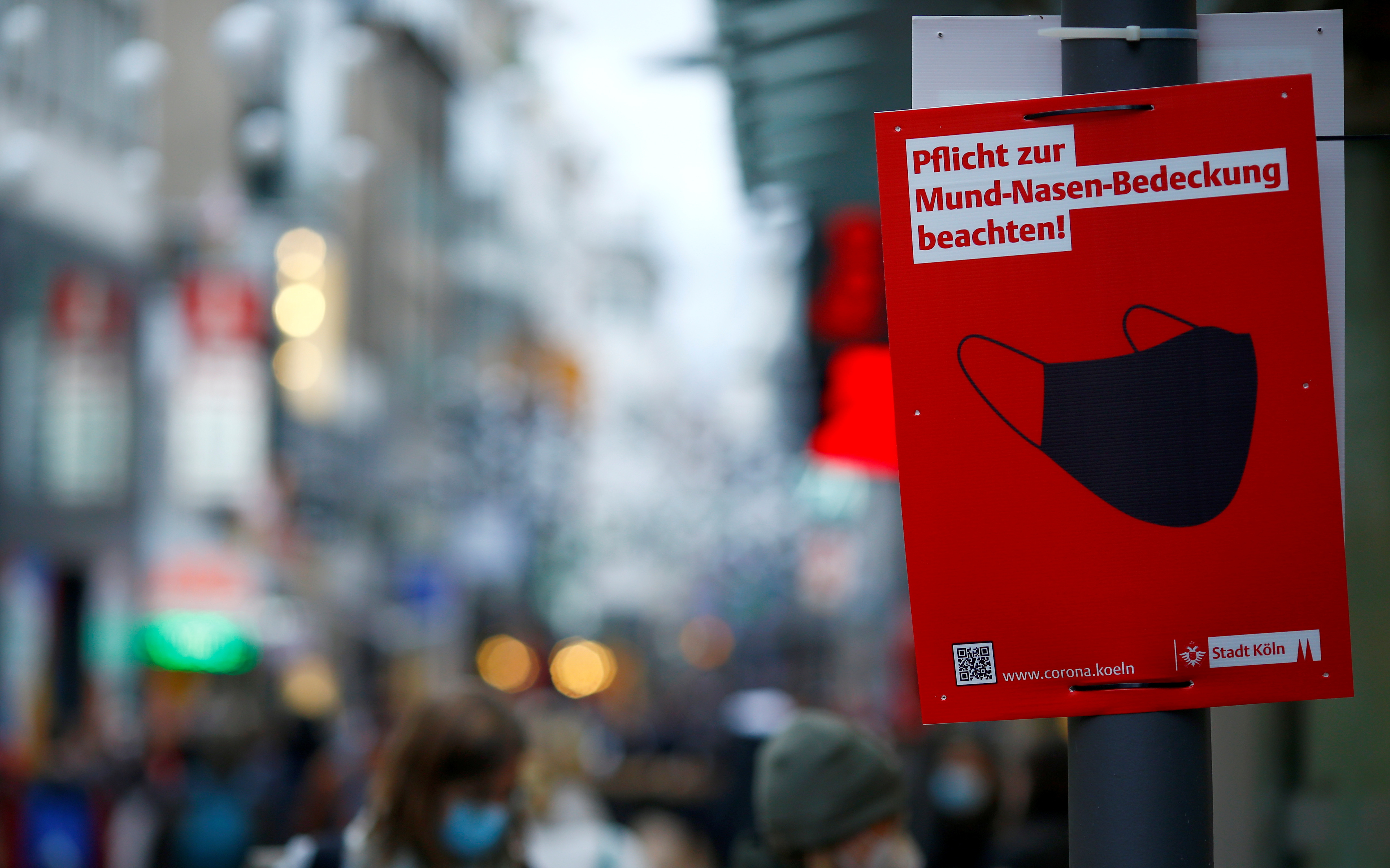Omicron In Europe
 |
| DPA |
"Two years into the pandemic, we are not closer to knowing how it actually began. An independent investigation is impossible and key information is lacking. Leading publications are still debating the “lab leak theory” that posits that the virus actually came from a nearby lab.""And then that very technology, like social media big-tech giants, was put into action to stop us asking questions about the 'lab', and doors were shut to us. Major organizations that were supposed to help stop a pandemic, like the World Health Organization, were telling people as late as January 14, 2020 that 'preliminary investigations conducted by the Chinese authorities have found no clear evidence of human-to-human transmission of the novel coronavirus (2019-nCoV) identified in Wuhan'.""We’re still expected to believe, two years later, that we weren’t criminally misled regarding a preventable pandemic, and that basic information wasn’t denied the world in those key weeks in December 2019 and January 2020. Leading Western coronavirus researchers had been studying this exact threat in China in the years before the outbreak and yet, in January 2020, didn’t rush to warn the world or help provide insights into how to prevent a worse pandemic."Seth J. Frantzman, Jerusalem Post"Based on mathematical modelling conducted by ECDC [European Centre for Disease Prevention and Control], there are indications that Omicron could cause over half of all SARS-CoV-2 infections in the EU/EEA [European Union/European Economic Area] within the next few months."ECDC statement

The world has changed in the last two years; entirely focused on a virus whose global effect has been to roil the world's economic status, alter the entire human social structure, challenge nature's own gifts to humanity, make recluses of gregarious creatures, send people into debt and insecurity, threaten food scarcity, effect a halt in the global distribution system, exhaust hospital resources and those who labour in them, destroy global cohesion even as another natural phenomenon known as climate change clangs another alarm to distract humanity from its preoccupation with the paltry issue of existence.
According to the European Union's public health agency the Omicron variant so recently emerged out of Africa may be responsible for over half of all COVID-19 infections on the continent within a few months. Even so, as yet no cases of severe disease have been identified in the region. Preliminary data relating to the high transmissibility of the Omicron variant is set to be demonstrated in real time, that its infectious rate is higher than that of the previous variant of interest, Delta, which has cut a swath through the world in its relentless wave.
The 27 EU member countries along with Iceland, Liechtenstein and Norway comprise the European Economic Area, where inflationary pressures related to the economic outcomes of the disease have presented as yet another challenge to be overcome. At the same time it is useful as a reminder that every time the world breathes a sigh of relief that the worst appears to have passed with COVID, leading to self-congratulations and openings to provide relief for COVID-weary populations, COVID presents still more unwelcome surprises.
Omicron, according to the top French government scientific adviser, Jean-Francois Delfraissy, could replace Delta as the driving force of pathogenic infection by the end of January. To this point Europe has recorded just under one hundred cases of the new variant, half of which were asymptomatic, the other half with mild symptoms, with no cases featuring severe disease, hospitalization or death. Countries like Germany, Austria and Switzerland are in a parlous state of runaway infections.

As the bloc's largest economy, Germany is on the cusp of launching stark restrictions on its unvaccinated population, a demographic that will not be permitted access to any but the most essential of businesses; grocery stores, pharmacies, bakeries. This in the hope of finally breaking the surge in coronavirus infections where Delta has been the culprit. With the sudden appearance of a strain superior in its infectability rate, the weary state apparatus straining to protect its public, is pushed to the maximum.
Hoping to skirt the ultimate solution of a complete lockdown that would impose a strain on the recovery of the German economy, businesses will be kept open to the 69 percent population fully vaccinated, along with those who have recovered from the virus. The fourth wave devastating Europe, risking the intensive care units being overwhelmed resulted in overwhelming numbers of new infections and deaths in Germany. With a vaccination rate standing at just under 70 percent Germany reflects the EU average.
Flirting with the potential of making vaccination mandatory and restricting the numbers of those in attendance at large events like sporting matches are among other dramatic measures being discussed. "How we can encourage and potentially think about mandatory vaccination
within the European Union? This needs discussion. This needs a common
approach, but it is a discussion that I think has to be led", said Ursula von der Leyen, head of the European Commission.
 |
| A sign that reads "Observe the obligation to cover your mouth and nose" is placed on Hohe Strasse shopping street as the spread of the coronavirus disease (COVID-19) continues in Cologne, Germany, December 1, 2021. REUTERS/Thilo Schmuelgen |
Labels: Mandatory, Omicron Variant COVID-19, Restrictions, Vaccinations

0 Comments:
Post a Comment
<< Home